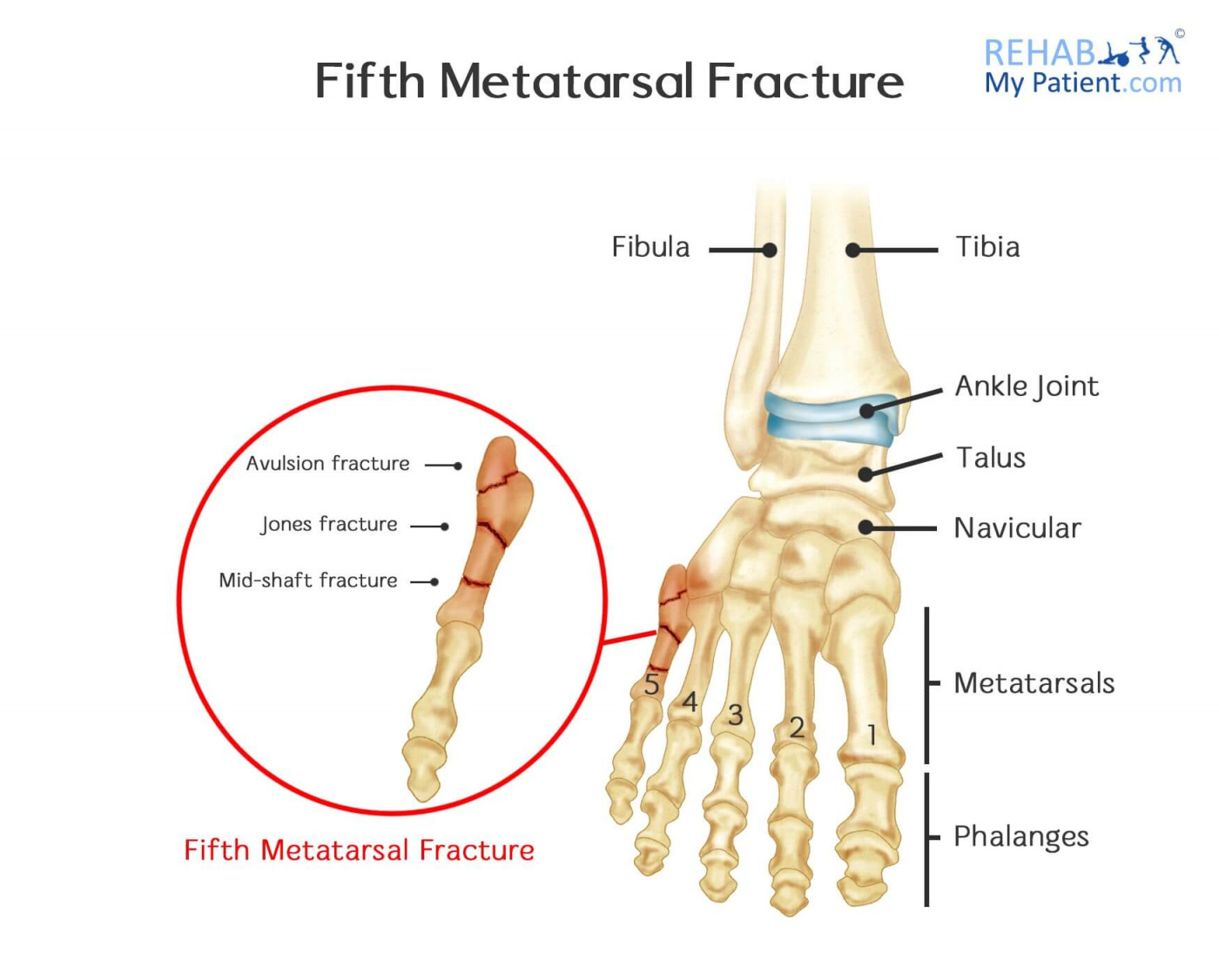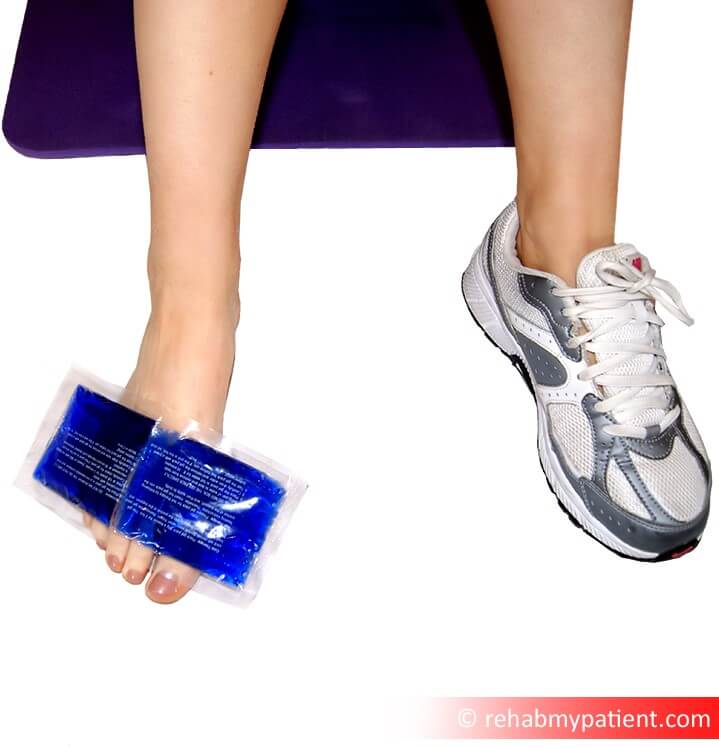Jones Fracture
Posted on 06th Aug 2017 / Published in: Toe

The fifth metatarsal bone is the small bone along the outside of your foot, and is prone to both regular fracture and a stress fracture. A fracture through the top of the bone is known as a Jones Fracture.
Regular fractures to the fifth metatarsal (sometimes known as the 5th met) are caused by running at high speed then turning the foot. The causes can be similar to an ankle sprain, where the foot is rolled slightly. It can also be caused by tripping over an object and rolling the foot.
Stress fractures are small cracks in the bones and this can also occur in the 5th met. They often occur from overuse, such as that of a high-impact sport like basketball or distance running, and from over-training. Studies indicate that athletes who participate in track and field, tennis, dance, gymnastics and basketball are at an increased risk of fractures. In any of the aforementioned sports, the continual stress of the foot hitting into the ground has been shown to cause problems. To recover from a stress fracture, rest is crucial.
The pain from a stress fracture is felt along the outside part of your foot. For the first two weeks there should be no weight-bearing through the foot. In the early stages (up to 6 weeks) walking is uncomfortable. Pain can be present in the bone for up to 3 months.
Jones Fracture Anatomy
The most common locations of fractures are in the metatarsals of the foot. There are five in the foot, and they are longer bones in the foot that join the toes to the rest of the foot. The 5th met is the outer of the 5 metatarsals.
When the fracture occurs at the start of the metatarsal bone, it is known as a Jones Fracture. This is located approximately mid-way along the outer part of the foot, and there is usually a painful bump over the fracture site.

How to Treat a Jones Fracture:
- Rest
If you are overtraining, give yourself more time to rest. On average, it takes six to eight weeks for the fracture to heal. During that timeframe, you will want to switch to activities that place a minimal amount of stress on the leg and foot. Cycling and swimming are both excellent alternatives. The main thing to remember is that you don’t want to engage in any physical activities involving the ankle or foot until you are able to speak with your health care provider.
- Protective Footwear
To reduce the amount of stress on the leg and foot, you might need to wear protective footwear. This can be a still-soled shoe, removable short-leg fracture shoe or wooden-soled sandal.
- Casts
It might be necessary to apply a cast to the foot to make sure the bones stay in a fixed position and alleviate any undue stress on the leg. Casts are a form of external fixation. To alleviate weight from your leg and foot, you might need to use crutches until your bone has had a chance to heal.
- Surgery
Some fractures need surgery to properly heal. In the majority of cases, this involves providing support to the bones using a fastener. This is referred to as internal fixation. Screws, pins or metal plates are often used to hold the small bones of the ankle and foot together throughout the healing process.
Tips:
- Maintain a proper diet. Consuming Vitamin D and calcium loaded foods helps to build bone strength.
- Use the proper equipment for playing sports. Avoid wearing worn or old running shoes.
- Begin any new sports activity slowly. Increase the speed, time and distance at 10 percent every week.
- Strength training helps to prevent muscle fatigue early on and prevents the loss of bone density associated with aging.
- If swelling or pain returns, cease performing the activity and go back to your medical professional for more advice and treatment.
- Place an ice bag over the foot to reduce any inflammation. Use it for 5-10 minutes under the guidance of your RMP therapist.

Sign UP
Sign up for your free trial now!
Get started with Rehab My Patient today and revolutionize your exercise prescription process for effective rehabilitation.
Start Your 14-Day Free Trial